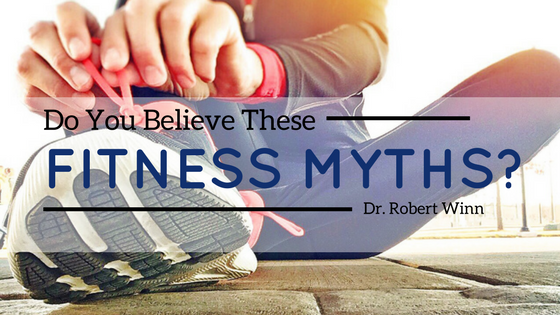Everyone has an opinion about your workout. Your best friend thinks that you should exercise in the morning to lose weight; your running buddy insists that the two of you should start using treadmills to save your knees; even your niece thinks you should try her favorite protein shake recipe as a post-workout snack.
But stay wary of friendly advice; some fitness tips are based on nothing but myth! A lot of fitness misinformation circulates by word of mouth and via the Internet – and while some of it is benign, a few tips could potentially lead you to injury. Below, I’ve listed a few of the false fitness ‘facts’ I commonly hear at the gym.
Treadmills are better for your knees than pavement.
Contrary to popular belief, jogging on a treadmill is not any easier on your knees than jogging on a paved road or bike path. Runners concerned for their knees should consider periodically switching between the treadmill, elliptical, and spin cycle to alleviate strain on their joints. That
being said, running outside does impose risks such as uneven pavement, other runners, walkers (and sometimes pets), and varying weather conditions. Treadmills take away these other risks
of injury.
Ab exercises burn belly fat.
Unfortunately, this is simply not true. You might do eighty crunches a day and have fantastic abs – but you won’t be able to see them under a layer of fat. Consider balancing strength training with cardiovascular exercises for the best weight loss results. If you have a layer of fat to burn,
you will need to couple exercise with diet changes to loose that fat. Doing core exercise,
however, can help to improve your form and make your workouts more efficient.
Yoga helps with back pain.
To be fair, this one isn’t entirely off-base. Yoga can help with back pain when it is caused by strained or knotted muscles; however, the practice can also make alignment-caused pains worse. If you have a slipped disc or spinal injury, consult your doctor before enrolling in a yoga class. You may need physical therapy to strengthen the back muscles in order to take full advantage of
the flexibility benefits that yoga is known for.
No pain, no gain.
Some believe that you aren’t really working out if you don’t feel a little pain – but you shouldn’t listen to them! Pain during a workout is the body’s indication that something isn’t right. If you push yourself too hard, too soon, you could seriously harm yourself – so stay mindful of your body’s cues! You should only feel some residual pain or soreness a day or two after your workout. It will take time to understand your body’s cues, but you have to take the time to listen! You will have to put your muscles and joints under strain to become stronger, but the that feeling is different from outright pain. If you don’t know how to tell the difference, enlisting the help of a personal trainer might be a good option for you.
Exercise is the best way to lose weight.
Again, this isn’t precisely true. While a regular exercise routine is vital to any weight loss program, it does not suffice on its own. Think of it this way: If you eat a fast-food burger for lunch and dinner everyday and go to the gym for an hour every other day, would you expect to lose weight? Both a well-balanced, nutritious diet and a regular exercise program are necessary components of an effective weight loss plan. At the end of the day, your body will only lose
weight if the calories you eat are less than the calories you burn. Interestingly, stronger and larger muscles do require more calories to function, so periodically re-assessing your diet/exercise regimens is important. Remember that calories are not all equal. Your body needs calories from protein, fat and carbs to correctly function, as well as vitamins and minerals that are often absent or low in a poor diet.

